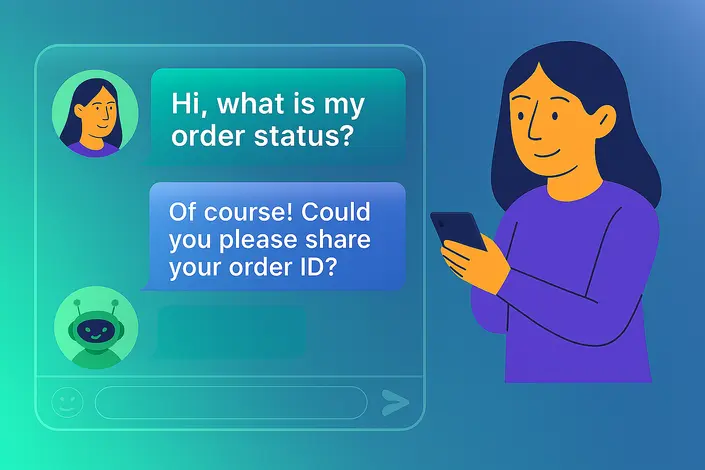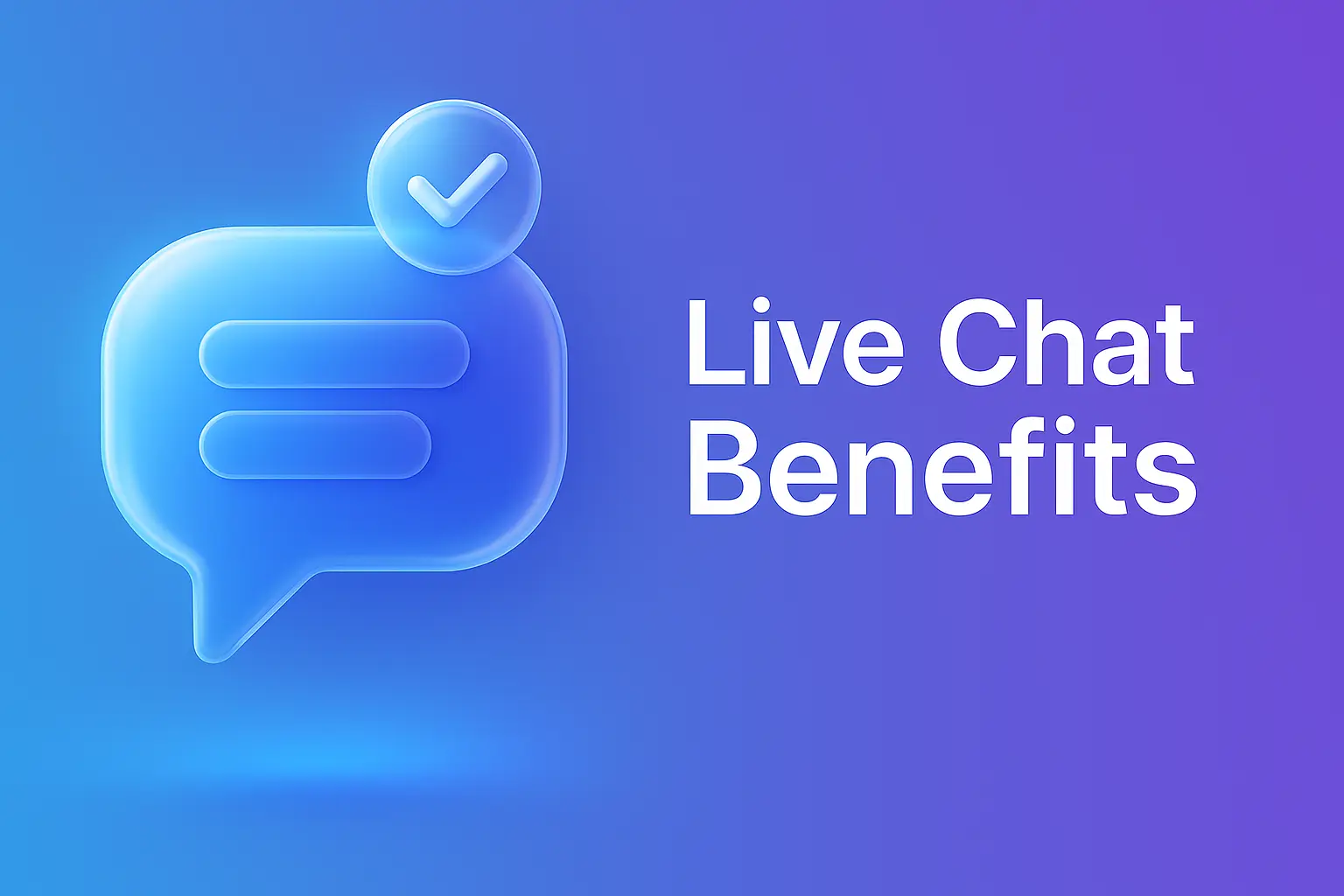16 Live Chat Best Practices for Excellent Customer Support
- November 16, 2020
- 14 mins read
- Listen

Live chat is a fantastic tool for engaging with your customers on digital platforms like your website, mobile app, or social media channels, but here’s the catch—it’s not enough to just have it. If you are not following live chat best practices, you might be doing more harm than good.
Think this way: your customers expect effective real-time responses from your support reps, falling short of those expectations can leave them frustrated and chances are high that they might replace your brand with any of your competitors.
So, live chat, when used properly, is more than just a support tool—it’s an opportunity to build trust, boost satisfaction, and turn casual visitors into loyal customers. Here in this blog, we will explore 16 live chat best practices that can help your business offer seamless and satisfying customer services while improving operational efficiency.
16 Live Chat Best Practices to Improve Your Customer Service
Customer support technology, such as live chat, empowers agents to respond promptly and accurately. By adopting effective live chat practices, you can elevate the quality of communication with your customers and provide consistent support across all touchpoints. The following best practices are designed to help you create, train, and manage a skilled and professional live chat team that delivers outstanding customer care and support.
- Integrate Your Live Chat Widget at the Right Places
- Set a Clear Response Time
- Use Canned Responses for Prompt Replies
- Improve Resolution Time with Intelligent Routing
- Personalized Assistance with Video Chat
- Real-Time Engagement with Co-Browsing
- Follow the Right Live Chat Etiquette
- Automate Your Customer Service with Chatbots
- Live Chat Integration with Other Business Tools
- Maintain a Human Touch Throughout Live Chat interactions
- Target Your Audience with the Right Triggers
- Measure SLAs with the Right Live Chat Metrics
- Offer Omnichannel Chat Support
- Categorize Chats with Tags
- Collect Customer Information with Pre-Chat Forms
- Collect Customer Feedback After Every Conversation
1. Integrate Your Live Chat Widget at the Right Places
You have likely heard the phrase, “Walk a mile in your customer’s shoes.” This means putting yourself in their position to view the situation from their perspective. By thinking like a customer and understanding their needs, you can deliver solutions that are both relevant and effective.
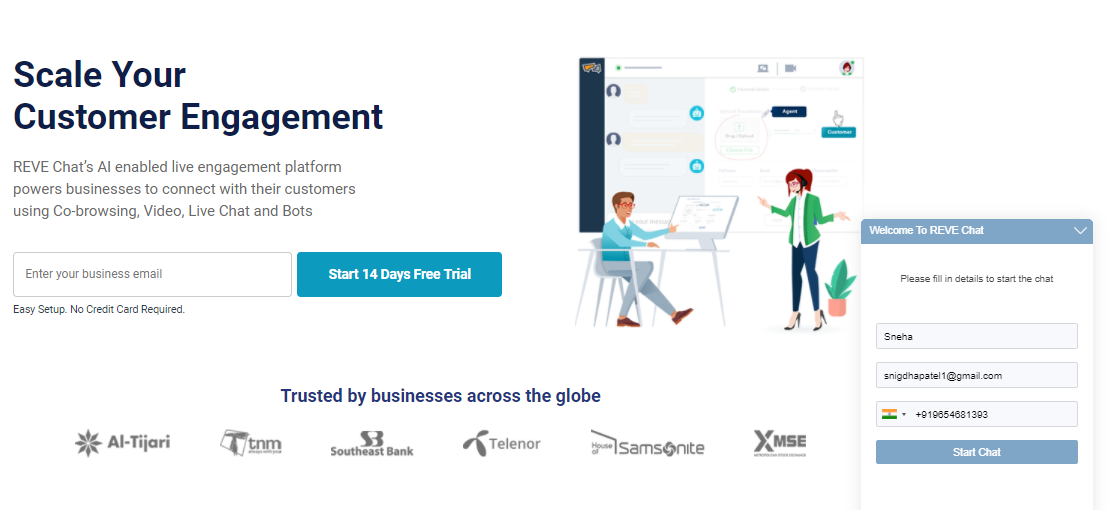
When the customers visit your website, they will follow their instinct to take action. To provide a better live chat experience, place the chat widget in strategic locations on your website. Proper placement is crucial to ensure it is easily visible and accessible to your customers.
According to Nielsen-Norman Group research, customers tend to scan in an F-shaped pattern. The standard placement for live chat customer support is on the bottom-right of a window screen as customers expect their live chat widget to be available there.
2. Set a Clear Response Time
Customers want fast replies. With live chat of course you can provide that but it’s also important to set an expected response time. On average, the wait time for live chat is around two minutes, but there are cases where customers don’t want to wait even more than 40 seconds. In these cases, offering self-serve options may work well to ease the pressure on your live chat agents.
3. Use Canned Responses for Prompt Replies
When it comes to customer service, it’s no secret that long wait times are something to be avoided at all costs. Customers expect faster responses without having to wait for long. Canned responses are a smart way to improve your customer response time and deliver a better experience.
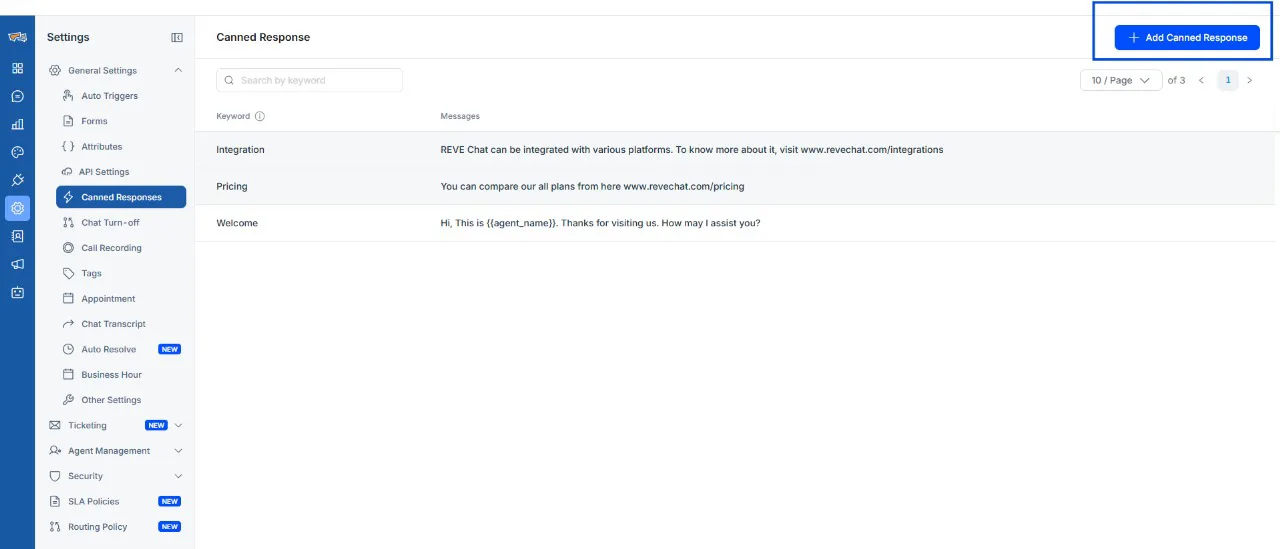
Canned responses are pre-written replies to common queries that can be sent to customers instantly. Here is how canned replies help in improving the response time.
- Faster Response: Customized responses improve the resolution process with faster responses and boost customer satisfaction.
- Accurate Responses: By using canned responses, you can enhance the responses in terms of complex names, addresses, URLs, etc. that need to be answered frequently.
- Consistency in brand Messaging: Preset responses help to deliver a consistent brand messaging experience during conversations with website visitors or customers. Depending upon your business interactions, you can prepare customer service scripts or canned/pre-drafted messages beforehand, for the commonly asked queries.
4. Improve Resolution Time with Intelligent Routing
82% of consumers look for an immediate response from brands on marketing or sales questions. Routing chat requests to the appropriate departments ensures faster resolution, as subject matter experts handle the queries directly.
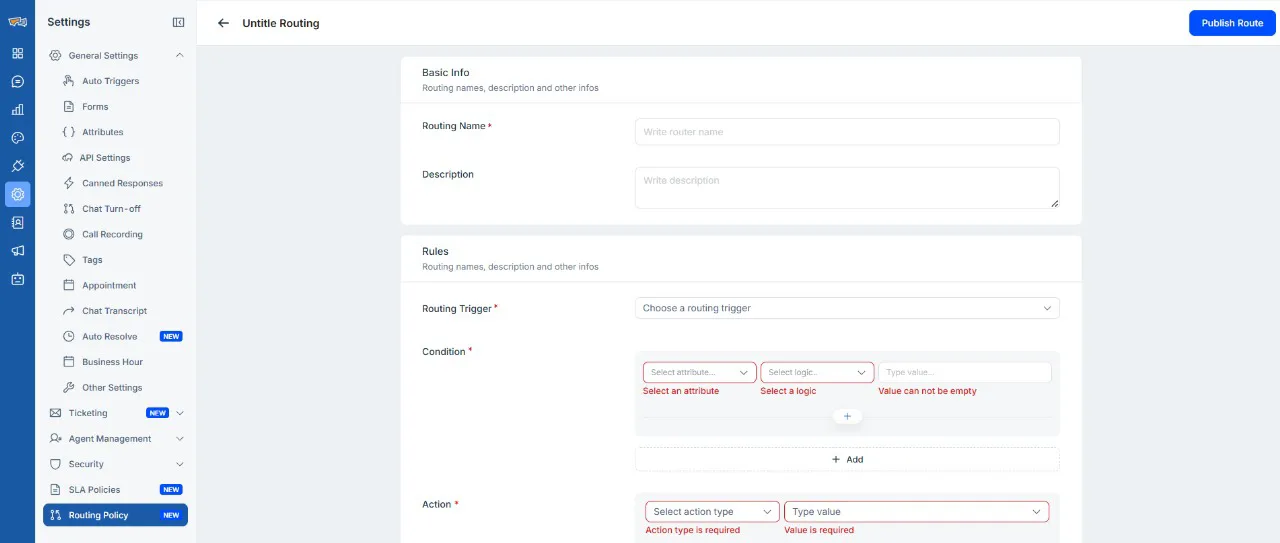
With intelligent routing, your live chat support team can:
- Resolve issues faster as chats are directed to the right departments and the right agents.
- Reduce the first response time. When issues are resolved quickly, customer satisfaction and conversion rates increase.
- Handling the chat loads by distributing them to different departments helps to manage customer service in a better way.
5. Personalized Assistance with Video Chat
Video chat offers faster solutions by identifying the actual problem and improving the customer experience. Face-to-face chat helps you to build a better relationship with clients by providing personalized assistance to customers.

Here’s how video chat enhances live chat support:
- As customers can see the agents, the interactions are more personal and genuine.
- It simplifies communication and ensures a better experience.
- It helps to identify problems faster and deliver solutions at the first touchpoint.
- Personalizes chat conversations and improves sales conversions.
- Provides remote support and effectively engages with customers.
6. Real-Time Engagement with Co-Browsing
The co-browsing solution helps to collaborate with customers without letting them wait, which improves the response time. The sharing of the browser screen during the live chat sessions helps through complex form fill-up and application process, makes conversations interactive, and delivers a virtual in-person experience.
How does co-browsing improve the conversational experience?
- It delivers real-time remote support to your website visitors and customers in an interactive way by combining video & voice chat.
- Combining co-browsing with video chat allows agents to control the customer’s browser and proactively guide them in the right direction.
- The solution helps to improve your business KPIs like average resolution time which boosts your team productivity.
7. Follow the Right Live Chat Etiquette
Some basic etiquettes need to be followed while you interact with your customers over live chat sessions. The way of interaction is different from how you talk to your friends, and it is very important to understand the differences. Poor customer service fails to impress customers and affects your business rapport too. If you follow the right chat etiquette it will undoubtedly create a perfect experience.
Here are some tips for you:
- Listen patiently and allow customers to explain their problems
- Set a positive tone while speaking to them by using phrases such as “Please don’t hesitate”, “Please note that”, “Kindly”, etc
- Asking for feedback from customers and acting on it is an important live chat etiquette
- Never keep your customers waiting
The best way to win the hearts of your customers is to close their cases in the first contact itself, without having them have to come back multiple times and go over the same questions again.
8. Automate Your Customer Service with Chatbots
Chatbots have a big impact on the customer communication landscape. 64% of internet users say 24-hour service is the best chatbot feature. Powered by a Large Language Model (LLM), our advanced REVE Chatbot understands and provides human-like responses in multiple languages, enabling businesses to deliver instant and accurate support even for complex queries without requiring continuous human involvement.
It provides instant assistance to your customers round the clock and when all of your support agents are busy in other important tasks.
REVE Chatbot’s Advanced Features at a Glance:
- Fallback Options: When the bot cannot understand any customer query it provides multiple options to choose from to solve the issue and if that does not work it seamlessly connects with a human agent to solve the problem.
- Visual Flow Builder: Based on your business objectives and use cases you can create customer support, sales, marketing, or appointment booking bots without requiring any coding expertise.
- Sentiment Analysis: REVE Chatbot understands customer emotions. It saves customer data and by taking reference from that provides accurate responses.
- Data Sanitization: You can organize and transform your unstructured data into a structured format to ensure chatbots provide accurate responses.
- Bot Analytics: REVE Chatbot provides detailed reports on past conversations and chat handovers.
- Support FAQs: You can train REVE Chatbot with an unlimited number of FAQs asked by your customers.
- Multilingual Assistance: REVE Chatbot offers accurate responses to customer queries in multiple languages.
9. Live Chat Integration with Other Business Tools
No matter, you are a startup or a growing business, your live chat software should be seamlessly integrated with your existing business tools. It is a must-have practice that every business follows to automate and align things in a better way.
Automating tasks by connecting live chat with your other business tools is a big-time saver and productivity booster. Having such integrations helps you to spend your time more on customers and less on administrative tasks. REVE Chat offers seamless integrations with most of the popular tools to help you manage your business in a better way.
10. Maintain a Human Touch Throughout Live-Chat interactions
At times, live support representatives face problems in communicating with customers in a cheerful manner. When you manage to deliver human-like conversations then only businesses can set memorable customer service examples. By adding a human touch, you can delight customers which can lead to an increase in the customer lifetime value (CLTV). It also significantly impacts your brand credibility.
Here are some important tips for you:
- The live chat support agents should be honest if they don’t have an answer
- Make sure to use positive live chat scripts and phrases that make you sound friendly
- Refer the customer by his/her name
- Adapt your tone to the customer’s mood and language style to build up a rapport
- Start with a warm greeting
- Use empathy statements to show them that you care
- Be transparent and honest
- Use a positive language
11. Target Your Audience with the Right Triggers
You need to engage with your customers at the right moment through proactive chats. This is where live chat triggers come in handy. Triggers are automated actions that initiate a chat based on specific user behavior or criteria but using them strategically is also important. You can’t ignore the customers who land on your website. You can reach out to them and engage by sending proactive triggers in real-time.
Here are some common situations where you can send chat triggers to start conversations:
- A hesitant buyer
- Customers who returned back or repeat customers
- Customers who are from certain regions or geographical locations
- Pop-up promotional messages to the right customer
- High bounce rate pages
- Customers who are visiting FAQ pages
- Customers who are visiting certain product pages
- You can reduce cart abandonment by triggering the right and timely messages to your website visitors & customers
12. Measure SLAs with the Right Live Chat Metrics
By identifying the right live chat metrics and KPIs, you can measure your Service Level Standards (SLAs) and access live chat performance. With REVE Chat’s advanced reporting and analytics, you can measure your team performance against your defined KPI and improve the negative areas.
Here are a couple of key live chat metrics to measure the profit meeting the objectives:
- First Response Time (FRT): It refers to how long support agents take to send the first reply on an issue. It helps to understand how agile the business is about customer communication.
- First Contact Resolution (FCR): It measures customer satisfaction across a number of touchpoints. A higher FCR means happier customers.
- Customer Satisfaction Ratings (CSAT): The CSAT score allows to measure the level of customer satisfaction, find out the strengths and weaknesses and best ways to make customers happy.
- Cost Per Conversation: It measures your business ROI about how the resources and time invested in terms of live chat, is helping your business.
13. Offer Omnichannel Chat Support
Your customers always expect quick, convenient, and consistent support across all channels they use to communicate with your brand. An omnichannel live chat service ensures that customers can switch between channels—such as a website, mobile app, social media, or messaging apps—without losing context.
So, make sure your live chat tool seamlessly integrates with most of the common customer communication platforms. An omnichannel live chat platform connects website chat, social media messaging (Facebook Messenger, WhatsApp, Instagram, etc), email, and phone support into a single, unified platform. This integration allows agents to view past interactions and use them as references, ensuring customers don’t have to repeat themselves when switching channels.
To offer omnichannel live chat service, you need to:
- Identify where your customers prefer to communicate, whether it’s on your website, mobile app, WhatsApp, or Facebook Messenger, and ensure they can access the live chat facility there.
Your support team should be trained to handle multiple channels efficiently.
14. Categorize Chats with Tags
Tagging customer chats is very helpful. It can be used to categorize the chats based on queries e.g. product, price, or sales. When chats are categorized, they can be followed up further from the same place it has been left. Tagged queries enable support agents to follow up effortlessly without gathering the basic information again.
Why categorize chats with tags?
- Tags help organize customer interactions by topic, issue type, or priority, making it easier for agents to handle and resolve queries effectively.
- With tagged conversations, agents can access relevant details without repeatedly asking for basic info
- Tags ensure that the next agent handling a query has all the context he needs
- By tagging conversations, agents can better understand customer history and preferences, enabling more tailored interactions.
15. Collect Customer Information with Pre-Chat Forms
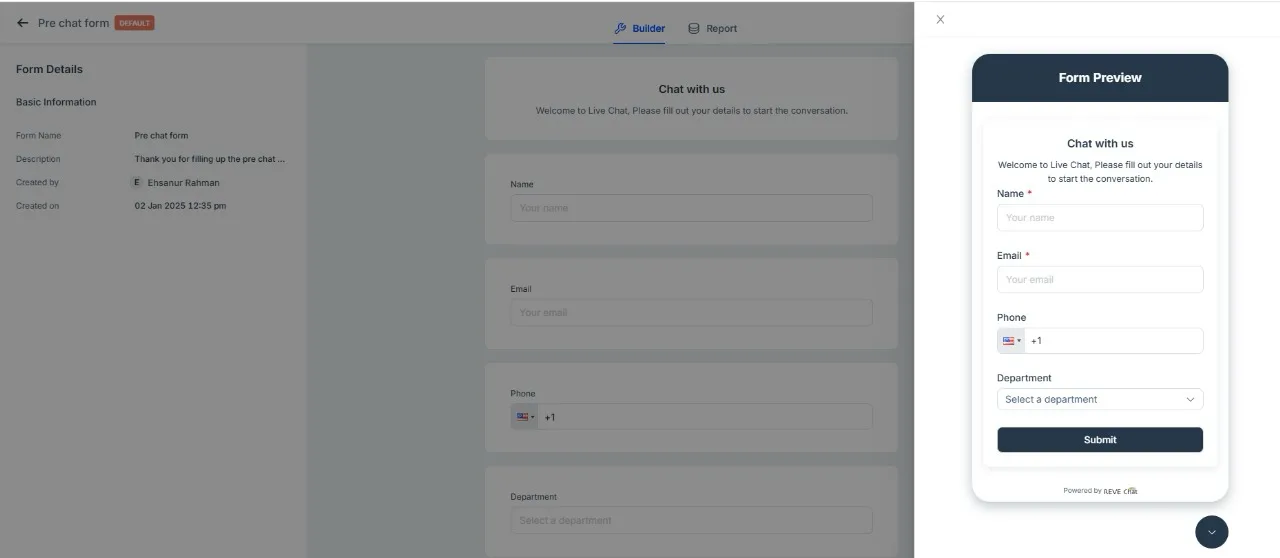
Pre-chat survey forms are an effective way to gather basic customer information, such as names, email addresses, or customer IDs, before starting a live chat session. This approach streamlines the interaction by eliminating the need to ask these questions during the chat. With this information readily available, you can deliver faster, more efficient, and highly personalized service. The form can also help in organizing and directing issues to the concerned departments for faster resolution.
16. Collect Customer Feedback After Every Conversation
“Your most unhappy customers are your greatest source of learning.” Bill Gates
And the easy way to know if your customers are happy or unhappy with your products and services is by asking for customer feedback. Client feedback is vital for every business and an important factor that determines the growth of your business.
Feedback gives your business a clearer view of how it is performing. Collecting feedback requires asking customers to share their feedback about the product, service, or overall experience. You can use customer satisfaction surveys, feedback forms, and questionnaires to collect feedback.
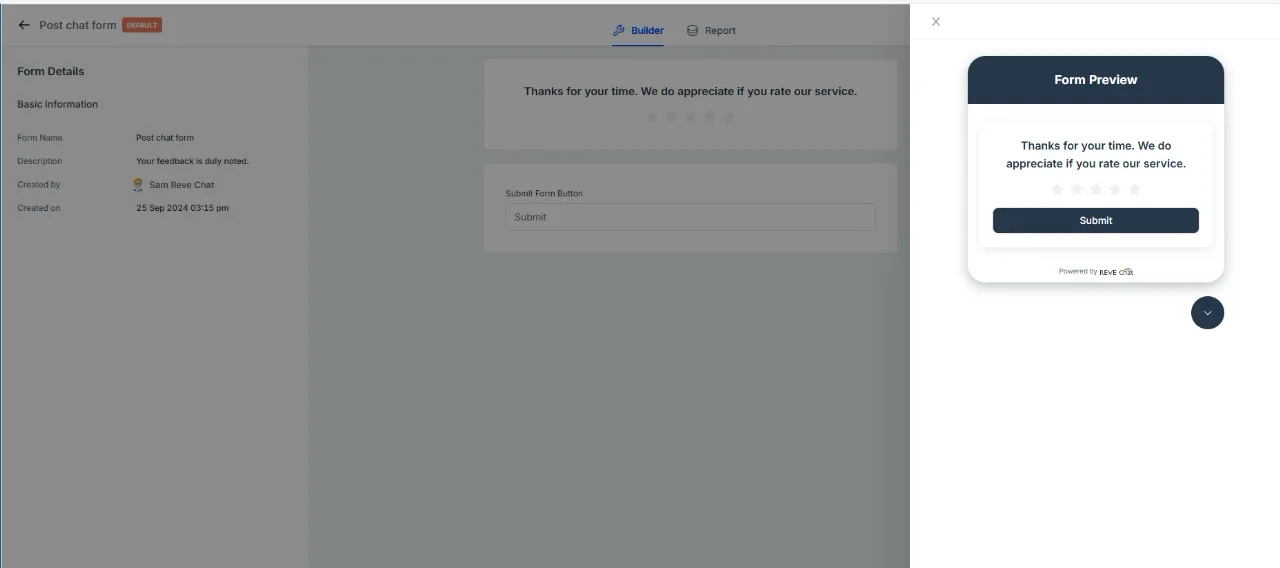
How does obtaining feedback help businesses?
- Measure customer satisfaction level with the product or services
- Enhance your customer communication
- Deliver a better customer experience
- Improve customer retention
The best time to ask for feedback from customers is right after the customer service conversation. Collecting feedback becomes effective when you analyze and act upon it.
Wrapping Up!
To offer best-in-class customer service, you need to implement live chat best practices. By maintaining high service quality, optimizing workflows, and personalizing interactions, you can build lasting customer relationships and enhance overall satisfaction. However, success in live chat support also depends on using the right tools.
REVE Chat is designed to empower your customer service team with advanced live chat features, automates customer service and other business operations, and enables seamless communication and faster resolutions, with a personalized touch. Ready to transform your customer support? SIGN UP for REVE Chat today and take the first step towards delivering exceptional live chat experiences!
Frequently Asked Questions
Live chat best practices are all about creating different strategies and guidelines that help you offer effective customer service through live chat. These best practices include choosing the best live chat software, customization, placement of the chat widget on your website, agent response time management, etc. to create a positive customer experience and increase conversion opportunities.
The live chat widget should be easily recognizable and accessible without interrupting the user experience. Ideally, place it at the bottom-right corner of your website, where customers are naturally drawn to interact.
Ideally, you should respond to a customer query within 30 seconds. Quick replies show customers that you value their time and are committed to resolving their issues promptly.
Personalization in live chat can enhance the customer experience by addressing customers by name, referring to their past interactions or purchases, and offering tailored solutions based on their unique needs. This creates a sense of value and improves customer satisfaction.
There are some key performance indicators (KPIs) by which you can measure its effectiveness such as response time, resolution time, customer satisfaction (CSAT) scores, and conversion rates. Apart from that, through live chat reporting and analytics, you get detailed reports on how your agents are performing.

